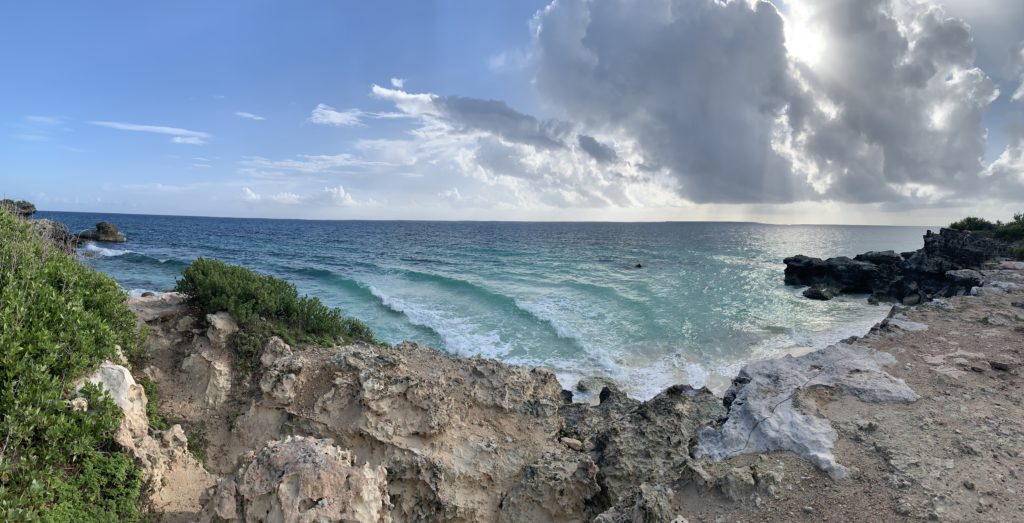
A breeze ruffles the guaya tree leaves. Shiny-eyed grackles and mockingbirds cackle and trill, interspersed with mourning dove coos.
Isla sounds.
My husband has the baby, and other than the occasional dog noise, the house is still.
I’m splayed across the kind size bed, body adjusting to the absence of the other, tiny body usually attached, or so close. My mind slides slowly over conversations, moments, memories. A disjointed, non-chronological microfiche.
Some jump in consciousness conjures remembrances from my early twenties—days in the Elmer Johnson Road cabin with The Rock River Farm crew. There are moments, such as this, when my mind struggles to fully grasp the magnitude of difference between my life then, and now. At twenty-three, what I believed my future would look like versus the reality that came to be.
An eight year relationship and marriage; a divorce; a two and a half year abusive relationship; a time of healing and joyful independence; a new beginning, marriage, and son.
It’s hard in many, many ways, from missing family to cultural differences, but I love our pirate life on this strange island in the Caribbean that is Mexico, and is also not.
It’s an interesting crew who wash up on these shores and make a home here, but for the most part they have a good story to tell and a light of perseverance and strength that’s too rare these days.
Callan is growing up in a community of mostly aunties—strong, hardworking, interesting women, and men, who love my son and will help us teach him to be a good man.
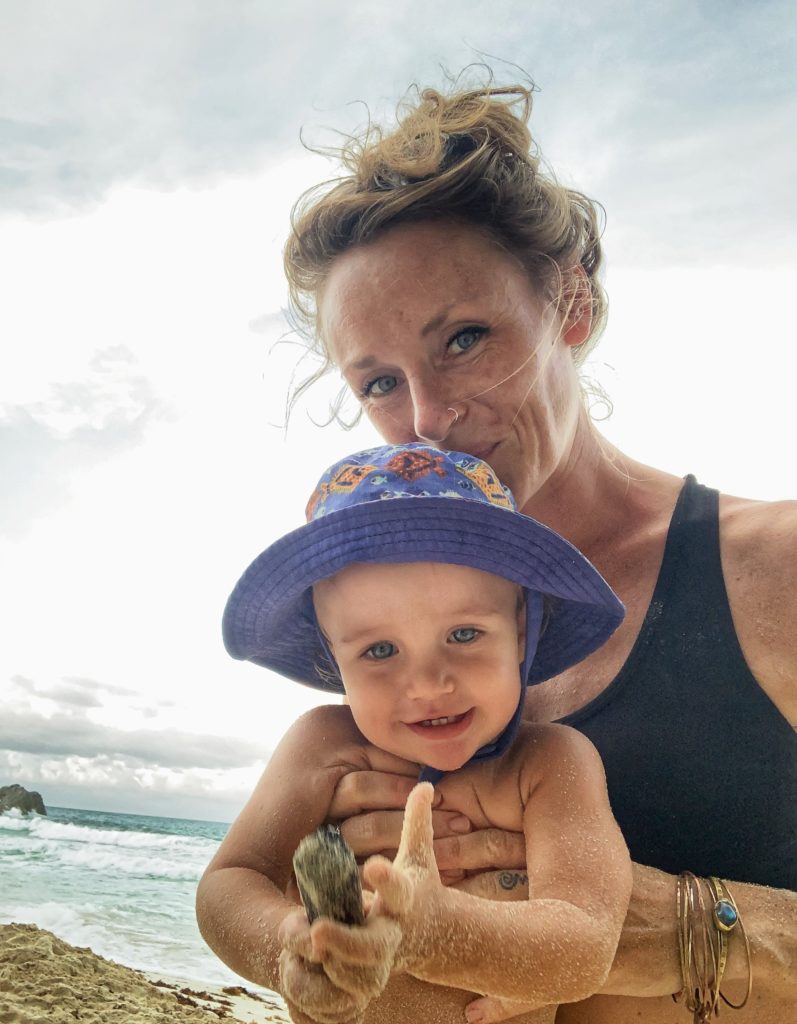
I missed an entire Upper Peninsula summer last year because I was very pregnant, and then home caring for a newborn. Returning to Michigan for a visit after missing it so fiercely, everything feels sharper, more acute. I’m overwhelmed by aromas: sweet milky milkweed; warm grasses baking in the sun; perfumed lemon lilies; seaweed-water lake tang; and all that abundance of pine needles, fields, forests of leaves and wildflowers warm beneath a July blue sky.
I don’t have to remind myself to take deep breaths. Instead, I nose the air like a hound, teasing out individual aromas like the orchid-delicate perfume of catalpa flowers, or the faint talcum hint of daisy.
I know I loved and noticed these aromas when I lived in Michigan, but perhaps they weren’t as vivid, masked by close proximity.
In absence, such remembrances sealed into our beings become more vivid—memory stones polished by much handling.
It’s raining, the air turned cool in a moment, petrichor lifting upward as the dry ground exhales in relief.
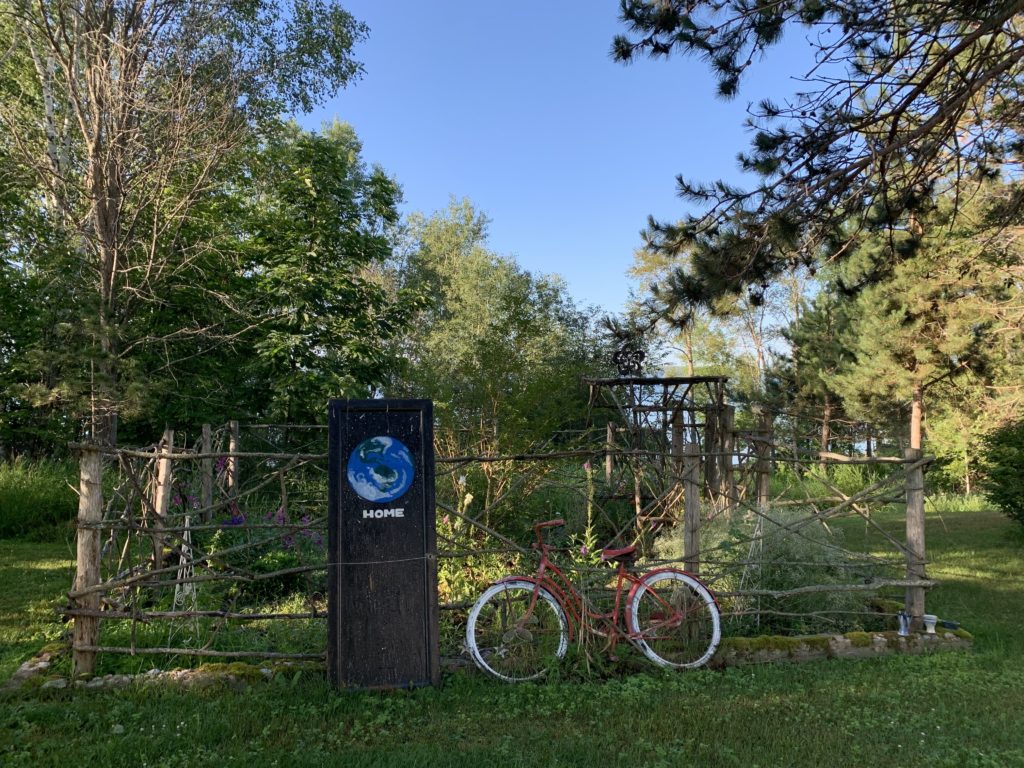
Because last winter was so cold and long, I didn’t expect the accosting hordes of pests that are wreaking havoc on local forests and gardens alike. Army worms have chewed the leaves into a shadow of the deep green they should be this time of year. When it’s very, very still you can sit in the woods and hear the pitter patter as the worm’s tiny mandibles chew and their poop falls to the ground.
Perhaps in response to global warming’s strange weather patterns or the destructive caterpillars, but everywhere I notice trees heavy with seeds. The cedar outside my bedroom window is loaded with little green nuts soon to brown in late summer sun.
Maple tree branches hang low, stems laden with as-yet green twin seed pods, waiting for the right wind to helicopter them to the ground in their bid for regeneration.
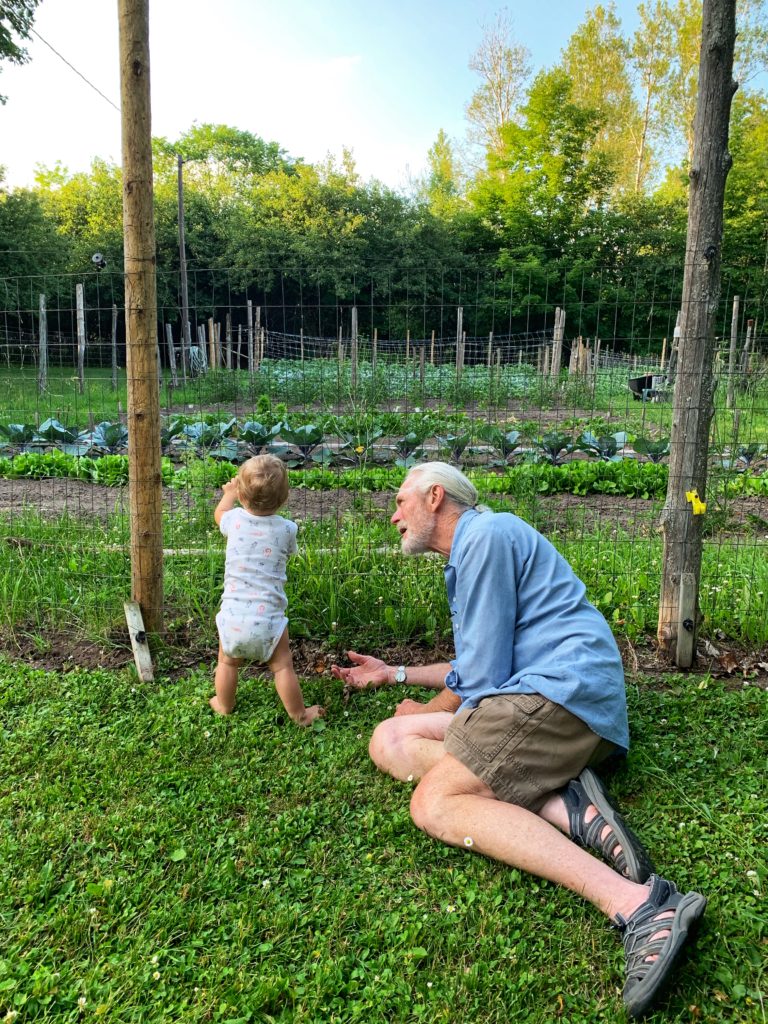
These are things I notice. The Upper Michigan environment is such a part of me. Named, handled, studied, and familiar. After being away, changes become more acute.
My dad’s garden is a fraction of what it should be as the flea beetles chew carefully tended seedlings down to nothing. But it’s mid-July, so there’s plenty of time to recover. Dad carefully attends to each plant, helping ensure their survival. The UP’s late growing season makes for an overwhelming, wonderful, glut of produce at the end of August. Sweet corn, broccoli, potatoes, tomatoes, peppers, cucumbers, green beans, cabbage, spinach, onions, zucchini, and the list continues.
It’s all so familiar, I slide back into this place with a wiggle of glee and joy. Familiar, but also more dear for the absence and longing.
Nowadays, I often ponder my dual blessing and curse of loving and being a part of two such wonderful, but far distant places.
How different they are, and yet each holds a part of me. It’s a beautiful incompleteness, but painful too, because no matter here or there, some little piece is missing.
Maple leaves and sea grapes. Guava trees and apples. Freshwater and salt.
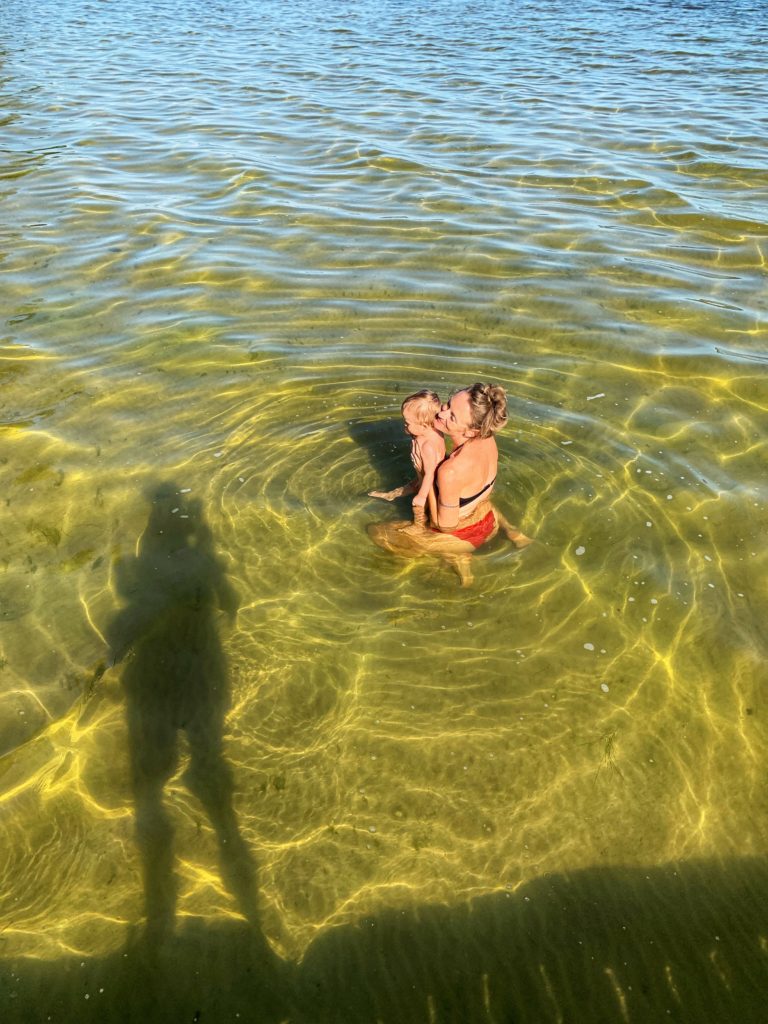
“It’s an unconventional life you’ve built for yourselves,” Ryan’s stepmom, Ellen says to us.
“Thank you,” Ryan and I reply in unison.
He smiles at me in the rear view mirror. I return the smile. A world of words in the meeting of eyes and a turn of lips.
We’re in the car, entering the outskirts of Cancun, returning from an afternoon visit to local cenotes. The traffic is light, but still hectic as lanes are ignored and mopeds, buses, and cars maneuver around one another in orchestrated chaos. I don’t drive in Cancun. I’m ok in city traffic, but I simply don’t understand the rules here. I suspect no one really does.
Ryan does a wonderful job, but it takes a lot of concentration.
In order to reach the cenotes, we drove our car onto the car ferry—a three story boat complete with passenger lounge and decks to watch the undulating turquoise waters below. Moments like this it hits me that we have to take a boat to get anywhere. That I live on an island.
Living in the UP often feels like living on an island—surrounded by water, isolated from access to urban areas, communities of interesting characters. Isolation necessitates innovation, and I see many similarities between my two homes, despite being worlds apart.
We drive to the little town of Puerto Morelos, and turn right onto the Ruta de Cenotes. All along this paved road are cenotes of different shapes and sizes. Cenotes are naturally occurring pools of water created by the porous limestone and collected rainwater. The pools are blue and deep—connecting underground through rivers and tunnels. The water has a hint of salinity, and the pools are round, giving them a decidedly womb-like feel. The waters feel sacred to me—a meeting of the above world and below world.
The cenote we visit has a cave and an emerald above-ground pool with waterfalls and a rope swing. Cenotes are the closest thing I can find similar to the lakes and rivers of Michigan—fresh water that cradled my body, washed my tears, and heard the confessions of my heart.
At the cenote pool, I lay on my back and look up, into the leafy jungle canopy. With my head underwater, I hear little of the voices around me and can almost imagine myself alone. Dragonflies and damselflies of all shapes, colors, and sizes, dart above me. Somewhere below, subterranean rivers run.
I raise my head from the water, and the first thing I hear, is my son’s laughter.
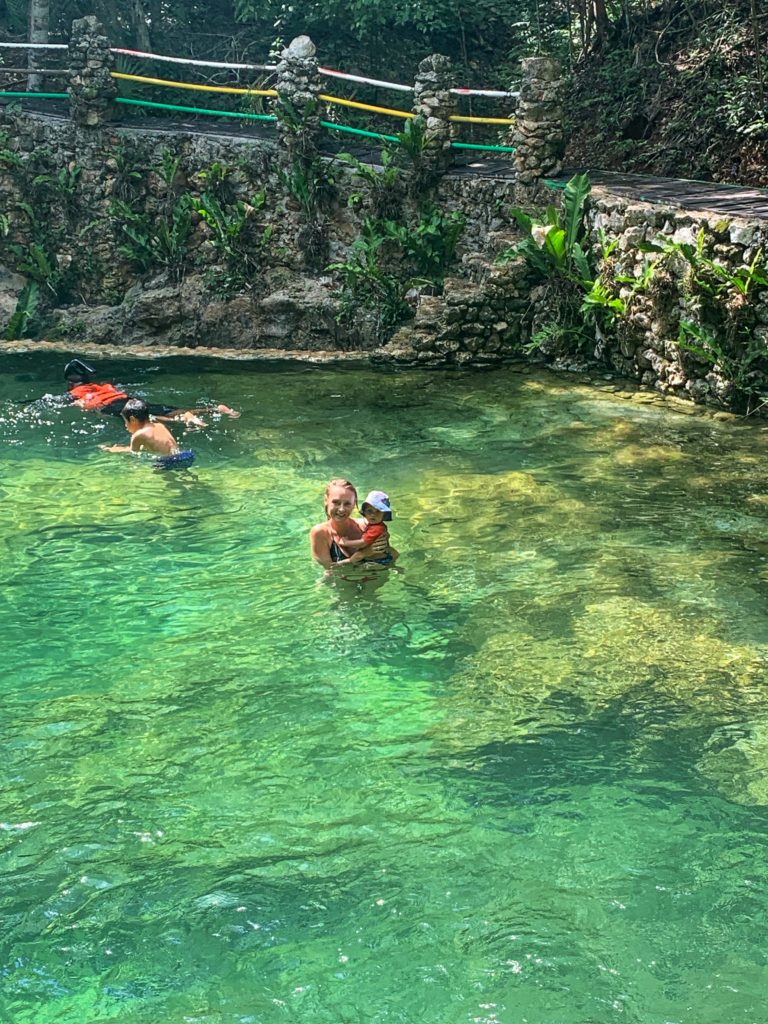
After breakfast this morning, I recite my list of things to do aloud to Callan, “Sweep the floor, do the dishes, writing, shower…Phewwww, lots to do little man!”
“Could be worse,” Ryan says from the porch.
I walk outside and take his face in my hands. Look him in the eyes. Give him a kiss that says all the things.
Callan and I wave as Ryan pulls out of the driveway on the four wheeler—not your average commute to work. He’s off to clean out our old restaurant as we prepare for opening in our new location. Our business that began as a side job making and delivering burritos out of the house is becoming a viable future. Twelve years of schooling, three English degrees, and my husband and I own and run a burrito business in Mexico.
Lots of fodder for a writer.
Callan turns from waving “Adios” to daddy, and returns to taking his coconut in and out of a kitchen pan, and stirring invisible food with a plastic measuring cup.
I return to my desk, and continue writing.
I’m learning to accept the fact that a balanced life, for me, means a foot in two worlds. I’m also unlearning feeling guilty and anxious about stepping away from what, for most of my adult life, I believed was my path.
I take Callan to the beach almost every morning. He runs in and out of the waves, pokes at tide pools, and browns his bare body in early day sun.
I gather up a handful of sand, and as the grains trickle through my fingers—remnants of coral and shells from thousands of years before—I whisper, “Gracias Madre.”
Gracias. For this sweet, unconventional life.
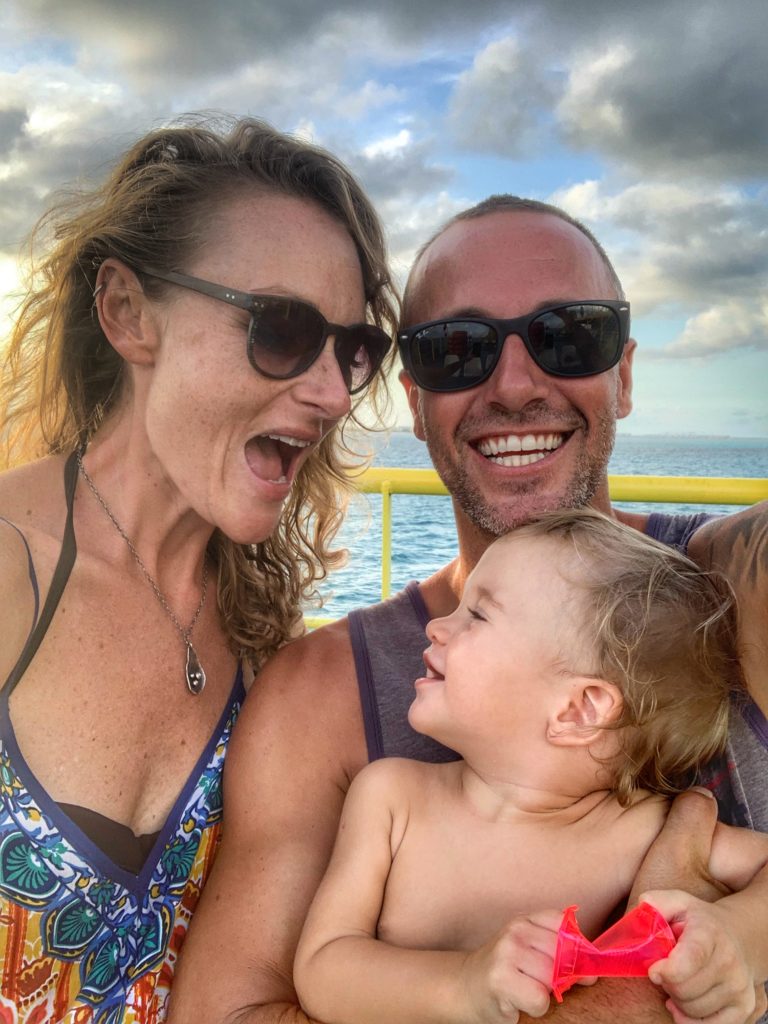
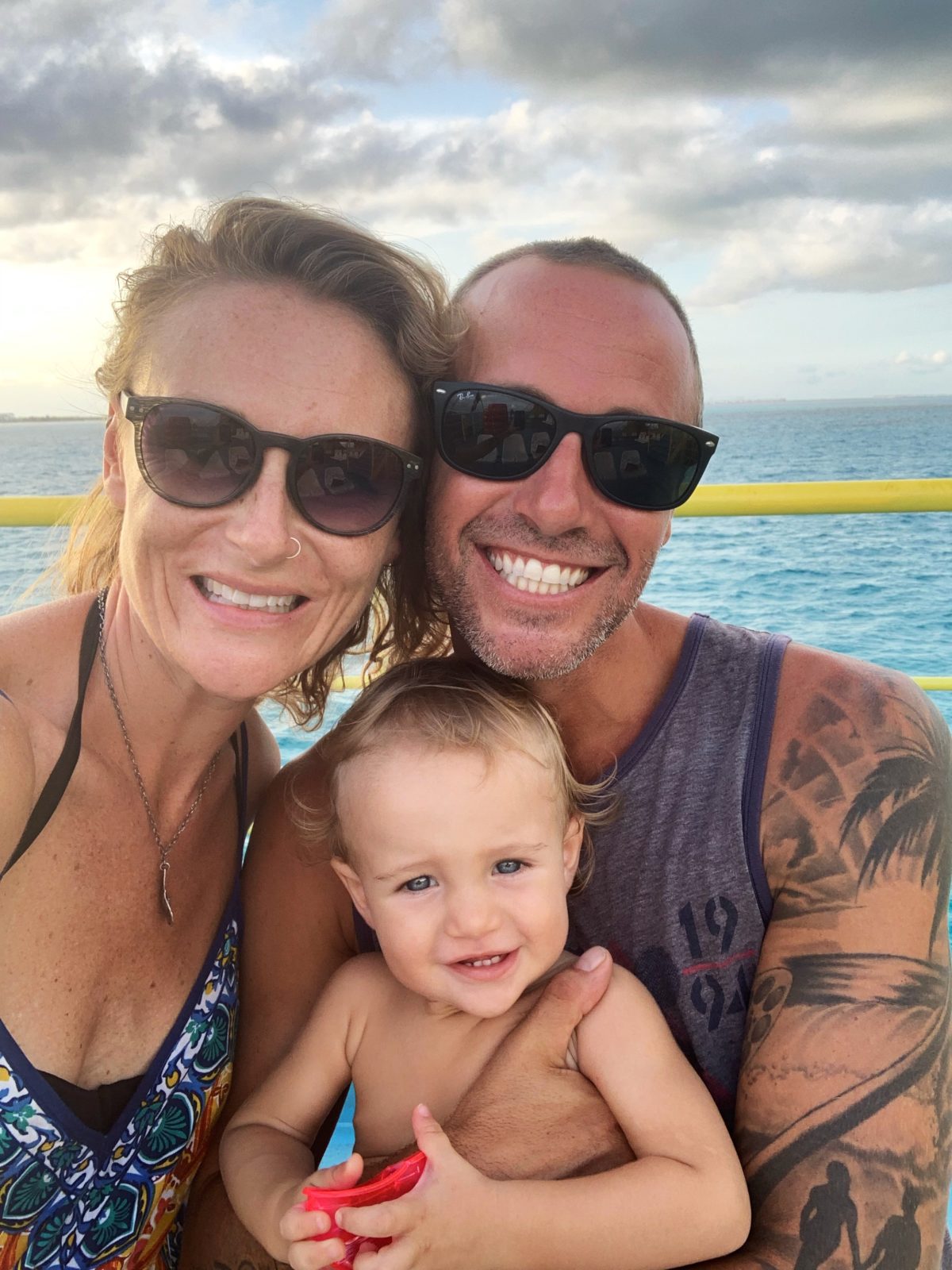
Great insight into living in 2 distinctly different areas. Being from Northern Michigan and vacationing on Isla Mujeres I can appreciate the perspective dream of being able to do something similar. I doubt you remember but we met on the ferry as we were leaving from our vacation in late January. Really hoping to get back soon and experience the island with out staying at a resort. We will definitely stop by when we do
Hello Chad!
Thank you so much for staying in touch. I remember meeting on the ferry and we hope to see you back on Isla.
Enjoy the fall for me. I miss the smell of leaves and making apple cider!